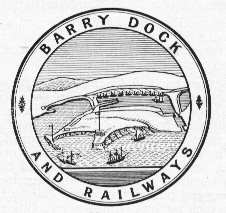Barry's History 3

In the 1870's, the ever-growing coal trade was far outstripping the facilities at Cardiff Docks and so a group of colliery owners formed the Barry Railway Company and chose to build the dock at Barry. Work commenced in 1884 and the first dock basin was opened in 1889 to be followed by two other docks and extensive port installations. The Barry Railway brought coal down from the valleys to the new docks whose trade grew from one million tons in the first year to over nine million tons by 1903. The port was crowded with ships and had flourishing ship repair yards, cold stores, flourmills and an ice factory. By 1913 Barry had become the largest coal exporting port in the world. In 1913 a total of 25,300,000 tons was shipped from the ports of Barry, Cardiff and Penarth, with Barry alone handling 11,050,000 tons of "black gold".
Behind the docks rose the terraced houses of Barry, which with Cadoxton soon formed a sizeable town. The railways, which had played a major part in the development of the dock did a great deal, too, to make Barry Island the popular resort it is today. Excursion trains brought thousands of people down from the valleys and, from the railway pier, the paddleboats plied along the coast and across the Bristol Channel. The area to the North of No. I Dock was the home of Woodham's Scrap Yard, famous throughout Britain as the "Graveyard of Steam", a rare attraction for steam railway enthusiasts and preservationists. No locomotives now remain however, those escaping the scrap merchant having been sold to preservation societies throughout the country.

The decline of the coal industry from the 1950's left the town in need of new industry and regeneration. In recent
years this has been gathering pace. Now much of the former docks are being redeveloped and the town has a bright future based upon newer
and lighter industries, leisure, service and tourism. The much awaited regeneration programme known as "The Waterfront",a joint
initiative between Associated British Ports and the Welsh Development Agency, has created thousands of new homes and jobs, new retail
developments, businesses, sports and leisure facilities. This included the award winnng
Hang Fire Southern Kitchen restaurant which operates from the restored Pumphouse, in what is known as the Innovation Quarter. A new
road has been built to link the Waterfront with Barry Island to relieve the holiday traffic that often clogs The Causeway.